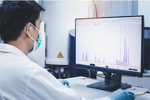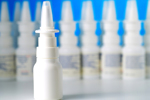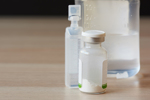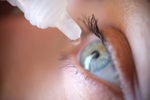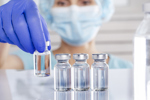Optimizing Your Biologic Drug Formulation Strategy
Biologic drug formulation is a sophisticated, critical stage of developing advanced protein-based therapeutics and other large molecule medicines. Unlike traditional small molecule drugs, biologics like monoclonal antibodies, cell therapies, gene therapies, and vaccines are derived from living organisms and might consist of proteins, antibodies, nucleic acids, live attenuated viruses, microbes, living cells, and more. Working with biologics presents unique challenges in formulation development, as they are highly sensitive to their environment and manufacturing conditions.
The primary goals of biologic formulation are to maintain the drug's stability, efficacy, and safety while ensuring proper delivery to the target site. Formulation scientists must carefully consider pH, temperature, ionic strength, and excipient selection to prevent protein aggregation, denaturation, and enzymatic degradation. Additionally, biologic molecules' large size and fragility generally necessitate parenteral administration, further complicating the formulation process.
As the biopharmaceutical industry continues to grow, effective formulation development strategies are pivotal to its success. Advances in formulation technology and understanding of protein behavior are helping biopharma companies develop safe, stable, and productive biologic medicines.
Table Of Contents:
- What Key Considerations Affect Biologic Formulation Stability And Design?
- How Do Formulation Strategies Impact Biologic Drug Delivery?
- What Innovations Are Improving Drug Delivery Systems?
- What Are The Best Practices For Biologics Formulation Processes?
- What Are The Regulatory Challenges To Biological Drug Formulation?
- How Is Biologics Formulation Evolving?
- What Emerging Technologies Are Revolutionizing Biologics Formulation?
- Frequently Asked Questions (FAQs)
What Key Considerations Affect Biologic Formulation Stability And Design?
Creating a manufacturing strategy for biologic drug formulation begins with design and experimentation to select the ideal materials and process.
Designing The Biologic Formulation And Long-Term Stability Studies
If you asked four experts, each working in a different modality, to describe the complexities of biologic drug formulation, you would receive four entirely different answers. Thus, the design process cannot be simplified into a universal strategy. When designing biologic formulation, scientists consider the following aspects of their particular product:
Molecular Complexity And Instability
Biologics are large, complex molecules with intricate structures prone to degradation through aggregation, deamidation, and oxidation. Thus, they require specialized formulation strategies to maintain their structural integrity and function.
Sensitivity To Environmental Factors
Biologics are highly sensitive to external conditions, such as temperature fluctuations, which can cause denaturation or aggregation. Exposure to light may also lead to oxidation or other chemical changes, while pH variations can alter protein structure and activity. Formulations must protect against these environmental stressors.
Limited Administration Routes
Biologics are typically delivered parenterally (e.g., intravenous or subcutaneous injection) due to poor oral bioavailability. Alternative routes may require specialized delivery devices or formulations. A perfect formulation ensures stability during storage and administration.
Physicochemical Characterization
Extensive characterization requires multiple analytical techniques to assess structure, purity, and potency. Due to heterogeneity and post-translational modifications, biologic characterization is more complex than small molecule characterization.
Appropriate Excipients And Buffers
Formulation compounds must be carefully selected to avoid compromising the biological drug. Excipients must stabilize the protein without causing adverse effects, and buffers maintain optimal pH for formulation stability and activity. Various surfactants, antioxidants, and cryoprotectants are employed, depending on the biologic’s unique needs.
Stability And Shelf-Life Requirements
Long-term stability continues to challenge the industry. Formulations must maintain potency and safety throughout the product's shelf life and thus require specialized storage conditions (e.g., refrigeration). Gaging stability via short and long-term stability studies under various conditions determines expiration dates and precise storage requirements.
Developing An Assay Regime
Planning an assay regime is a crucial step in the drug product development process. Research scientists conduct pre-formulation stability studies to understand the biologic’s unique properties and optimize the formulation process by running a series of assays to test and understand the biologic.
First, scientists assess the biologic's developability early in the discovery process by weighing key attributes such as the biologic's biophysical and pharmacokinetic properties, immunogenicity, and manufacturability. These factors are crucial in selecting the most promising drug leads and avoiding costly failures in later stages of biologics development.
Scientists use a combination of in silico, in vitro, and in vivo analytical methods to identify potential liabilities and accelerate the developability profile of biological candidates. In silico tools, such as molecular dynamics and machine learning, help predict the biophysical properties of biologics. In vitro assays, including biochemical assays, are used to screen for stability and other critical quality attributes.
During biopharmaceutical formulation development, scientists focus on ensuring the biologic's stability, efficacy, and safety. They must extensively characterize the biomolecule and discover the impact of various excipients on its stability.
Implementing A Quality By Design Approach
Quality by design approaches in developing therapeutics allow biopharmaceutical developers to streamline their formulation process by using methodologies such as:
Assess Risk For Critical Formulation Variables
First, scientists determine the critical quality attributes (CQAs) and critical material attributes that impact the drug's quality and performance. Risk assessment tools help prioritize these variables based on their potential impact on the final biological drug product.
Optimize Design Of Experiments (DoE)
DoE methods systematically investigate the relationships between multiple formulation variables and their effects on CQAs. Scientists use DoE to identify the optimal conditions that ensure biological product quality and consistency. This step is crucial for understanding the interactions between variables and establishing a robust formulation process.
Develop Analytical Methods For Product Characterization
Another crucial step is to characterize the drug product and ensure it meets predefined quality standards. These methods must be validated to accurately measure the CQAs and ensure the formulation's stability, efficacy, and safety throughout its lifecycle. Common techniques include:
- Western Blot
- Enzyme-Linked Immunosorbent Assay (ELISA)
- Peptide mapping
- High-Performance Liquid Chromatography (HPLC)
- Mass spectrometry
- Capillary electrophoresis
- Size-exclusion chromatography
- Ion-exchange chromatography
- Reversed-phase HPLC
- Circular dichroism spectroscopy
- Fourier-transform infrared spectroscopy (FTIR)
- Dynamic light scattering
- Analytical ultracentrifugation
- Surface plasmon resonance
- Flow cytometry
- Differential scanning calorimetry
- Isoelectric focusing
- N-terminal sequencing
- Glycan analysis
- Nuclear magnetic resonance (NMR) spectroscopy
Implement a Continuous Improvement And Control Strategy
An effective control strategy protects the drug product's quality throughout its lifecycle. Continuously monitoring and adjusting process parameters ensures they remain within the established design space. The QbD approach emphasizes continual improvement, allowing modifications based on new data and insights to optimize the formulation and manufacturing process.
How Do Formulation Strategies Impact Biologic Drug Delivery?
Formulation strategies for biopharmaceutical development are designed to enhance stability, control drug release, target delivery, and provide a feasible route of administration, thus optimizing the delivery and efficacy of biological therapeutics.
The Role Of Excipients In Preventing Degradation
Biopharmaceutical drug products can be sensitive to environmental factors such as temperature, pH, and oxidation. Adding excipients (e.g., buffers, antioxidants, stabilizers) protects the biologic from degradation during storage and provides:
Stability Enhancement
Excipients stabilize the complex and fragile structures of biological molecules, and the choice of excipient depends on the biologic's properties — sugars and polyols (e.g., sucrose, trehalose) act as cryoprotectants and lyoprotectants during freeze-drying. Amino acids and surfactants prevent protein aggregation and denaturation, while antioxidants protect against oxidative damage.
Functionality Improvement
Additionally, excipients can enhance the API’s solubility, regulate the formulation’s pH and tonicity, and act as bulking agents to enable accurate dosing.
Processing And Administration
Excipients can facilitate drug delivery and administration (e.g., as viscosity modifiers), improve manufacturability and processability, and enable lyophilization for better storage stability.
Safety And Efficacy
Furthermore, excipients can act as a preservative, preventing microbial growth while maintaining the preferred stable conformation of proteins. They also retain exposure to functional epitopes on antibodies.
Formulation Optimization
Excipients can ensure the development of high-concentration antibody formulations, provide room-temperature stability for some vaccines, and facilitate the development of combination products and multi-dose formulations.
Drug Product Efficacy
Drug formulation plays a crucial role in ensuring therapeutic efficacy, patient safety, and convenience and encompasses the following items:
Dosage Form
The purified drug product’s physical dosage form could be an injectable, a lyophilized powder, or, rarely, an orally delivered formulation. The dosage form determines drug absorption and bioavailability, the onset of action and effect duration, the active ingredient's stability, and patient compliance.
Selecting the dosage form depends on the drug's physicochemical properties, the intended route of administration, the target patient population, and, of course, the desired therapeutic effect. For example, intravenous formulations provide a rapid onset of action, while investigational extended-release oral formulations hold the potential to maintain therapeutic levels over longer periods.
Sterility
Sterility throughout formulation is essential to prevent product contamination and protect patient safety. Sterile filtration, aseptic processing, proper handling procedures, and protective packaging ensure the product remains free from microbial contamination.
Compatibility
The formulation must be compatible with the delivery system (e.g., syringe, vial, IV bag) and any ancillary equipment used for administration (e.g., needles, pumps). Compatibility refers to the drug's stability and interactions with excipients in the formulation, packaging materials, and other drugs in combination products.
Ensuring compatibility is essential for maintaining drug potency throughout shelf life, preventing the formation of toxic degradation products, and avoiding physical changes that could affect drug performance.
Patient Safety And Convenience
If a drug is too difficult or uncomfortable to administer, patients are more likely to stop using it. The formulation must prioritize patient safety and convenience to ensure drug compliance and safety.
Safety considerations include minimizing side effects through targeted delivery, reducing the risk of medication errors (e.g., clear labeling, distinct dosage forms), and avoiding potentially harmful excipients.
Patient-friendly drugs use simplified dosing regimens to improve adherence and easy-to-use delivery devices (e.g., pre-filled syringes, pumps, inhalers).
What Innovations Are Improving Drug Delivery Systems?
New and emerging methodologies that offer enhanced efficacy, safety, and patient compliance include the following:
Nanotechnology
Nanoparticles with dimensions in the nanoscale range (1-100 nm) can be engineered to deliver drugs to specific tissues, providing targeted and controlled release therapy. Liposomes and lipid nanoparticles, nanocrystals, and polymeric nanoparticles can encapsulate drugs, improving their solubility and stability while minimizing side effects through targeted delivery. This technology is especially beneficial for treating chronic diseases, as it allows therapeutic agents to target sites in a controlled manner precisely.
Biodegradable Polymers
Biodegradable polymers create drug delivery systems that degrade into non-toxic byproducts within the body. These polymers can be engineered into various forms, such as nanoparticles, micelles, or hydrogels, to encapsulate drugs and release them over a sustained period.
Their controlled release reduces the frequency of dosing and enhances patient compliance. Biodegradable polymers are ideal for long-term depot formulations and targeted delivery, such as in cancer therapy, where they can increase drug accumulation at the tumor site.
Personalized Medicine
Personalized medicine tailors drug delivery systems to individual patient needs based on genetic, environmental, and lifestyle factors. This approach can optimize therapeutic outcomes by selecting each patient's most effective drug and delivery method.
Recent advances in pharmacogenomics and digital therapeutics enable the design of personalized delivery systems that consider a patient's unique biological makeup, increasing efficacy while reducing side effects.
What Are The Best Practices For Biologics Formulation Processes?
Given the complexity of biologic drug formulation, relying on best practices in the areas listed below is crucial to success.
Choose The Right Buffer
Buffer choice significantly impacts formulation performance by influencing protein stability, solubility, and activity. A suitable buffer maintains optimal pH, prevents aggregation, and enhances shelf life. It also affects critical quality attributes like potency and purity. Proper buffer selection is crucial for ensuring consistent product quality, efficacy, and safety throughout the biologic's lifecycle by providing these benefits:
- pH stability: Protein therapeutics and other biopharmaceuticals are often sensitive to changes in pH, which can lead to denaturation and loss of activity. Buffers help maintain a stable pH, which is critical for the stability and efficacy of the product.
- Compatibility: The pH of the formulated product must be compatible with the body's physiological pH to minimize irritation and ensure effective absorption and distribution.
- Stabilizing interactions: Buffers also support the protein structure and function by providing optimal conditions for protein-protein interactions and minimizing aggregation.
Phosphate, acetate, and citrate buffers are commonly used in bioprocessing. The choice of buffer depends on factors such as the desired pH range, buffer capacity, and compatibility with the product.
In some cases, it may be necessary to exchange the buffer to remove unwanted ions or components that can interfere with the product's stability or activity. Buffer exchange is typically done using techniques such as diafiltration or diafiltration with ultrafiltration.
Select A Sterile Filtration Method
Sterile filtration removes microorganisms and particles from a biopharmaceutical product to prevent contamination and ensure the drug product’s safety. In downstream bioprocessing, filtration is used for various purposes, including filtering cell culture media, buffers, and final biopharmaceutical products. It is often the final step before packaging and distribution of the product.
Sterility depends on filters with pore sizes small enough to retain microorganisms and particles while allowing the biopharmaceutical product to pass through. The filter acts as a physical barrier that traps contaminants and ensures that the product remains sterile. Strategizing sterile filtration involves the following:
- Filter selection: Selecting the appropriate filter is crucial in sterile filtration. Filters are typically made of polyethersulfone, polyvinylidene difluoride, or cellulose acetate. The size of the microorganisms and particles to be removed determines the appropriate pore size.
- Preparation: Before sterile filtration, the filter and filtration system must be properly prepared to ensure sterility. A sterile buffer or media is flushed through the system to remove air and ensure the filter is correctly wetted with the product or a compatible solution.
- Filtration: Next, a pump or other device passes the biopharmaceutical product through the sterile filter. The filter retains any microorganisms and particles, allowing the sterile product to pass through and collect in a sterile container.
- Validation: Sterile filtration is validated to ensure that it effectively removes microorganisms and particles and maintains the product's sterility. The integrity of the filter itself and the product's sterility are tested to validate that the filter and product have not been compromised.
- Regulatory compliance: Sterile filtration is subject to regulatory requirements to ensure the safety and efficacy of biopharmaceutical products. Regulatory agencies such as the FDA and EMA require manufacturers to validate their sterile filtration processes and maintain appropriate documentation.
Plan To Scale-up
When scaling up from the lab to the factory, manufacturers must consider factors that influence the drug's stability, purity, and efficacy. Challenges and strategies include:
- Mixing and homogeneity: At larger scales, mixing excipients and the drug substance uniformly is more complicated. Proper mixing is critical for maintaining product quality and consistency.
- Heat transfer: Heat generation and dissipation change with scale; thus, temperature control during formulation is necessary to maintain product stability.
- Shear effects: Larger equipment may generate shear forces that impact sensitive biologics. Shear sensitivity needs to be evaluated and mitigated.
- Hold times: Longer processing times at larger scales may affect product stability, so hold times need to be validated.
- Filtration: Filter capacity and flux rates may not scale linearly, as filtration steps often require significant optimization during scale-up.
- Excipient dissolution: Dissolution kinetics of excipients may change at larger scales, potentially affecting formulation homogeneity.
- Equipment material compatibility: Interactions between the formulation and equipment surfaces need to be evaluated at a larger scale.
- Process analytical technology (PAT): Implementing in-line or at-line monitoring for critical quality attributes becomes more important at larger scales.
- Particle formation: Maintaining consistent particle size distribution during scale-up for liquid formulation or lyophilized formulation can be challenging.
- Sterility assurance: Maintaining aseptic conditions becomes more complex in larger formulation vessels.
- Process controls: Control strategies for pH, temperature, mixing speed, etc., must be adapted to larger-scale equipment.
- Formulation robustness: The formulation must tolerate minor variations in processing conditions that may occur at larger scales.
What Are The Regulatory Challenges To Biological Drug Formulation?
The formulation must comply with regulatory guidelines and safety, efficacy, and quality standards. This includes demonstrating the formulated product's stability, potency, and purity through appropriate testing.
Reporting Material Changes
Any material changes to formulation must be reported to the FDA in a supplement to the NDA and could be subject to further FDA scrutiny/approval. Such changes can significantly impact the drug's identity, strength, quality, purity, and potency.
The FDA requires that any modification be thoroughly assessed to ensure it conforms to approved specifications and does not adversely affect product quality or safety. This process helps maintain the drug's therapeutic efficacy and safety profile, ensuring that any potential risks associated with the change are identified and mitigated before the product reaches patients.
Other Common Regulatory Requirements In Biologics Development
Regulatory bodies such as the FDA and its Center for Biologics Evaluation and Research provide guidelines for biological drug formulation encompassing:
Current Good Manufacturing Practice (cGMP) Compliance
cGMP regulations ensure consistent production and quality control of biologics. They cover facilities, equipment, personnel, and processes to maintain product quality, safety, and efficacy throughout development and manufacturing.
Chemistry, Manufacturing And Controls (CMC) Documentation
CMC documentation details the manufacturing process, quality control, and specifications for the biologic. It includes information on raw materials, production methods, and analytical procedures to demonstrate consistent product quality.
Stability Testing
Stability testing evaluates the biologic's response to environmental factors over time and helps determine appropriate storage conditions, shelf life, and packaging requirements.
Characterization
The biologic's physical, chemical, and biological properties are comprehensively analyzed to provide consistency and quality across batches.
Container Closure System Compatibility
Testing ensures the packaging materials do not interact with or degrade the biologic, maintaining its stability and integrity throughout its shelf life.
Analytical Method Validation
Validation confirms that analytical methods used to test the biologic are accurate, precise, and reliable for their intended use.
Comparability Assessments
These evaluate whether changes in manufacturing processes or formulation affect the biologic's quality, safety, or efficacy.
Safety Assessment Of Novel Excipients
New inactive ingredients must be thoroughly evaluated for safety and potential interactions with the biologic.
Extractables And Leachables Testing
Compounds that may leach from packaging materials into the biologic formulation must be identified and quantified.
Process Parameter Controls
Critical process parameters are determined and controlled to ensure consistent product quality across manufacturing batches.
Qualification Of Equipment At Scale-up
Equipment used in larger-scale production must be proven to perform as intended and maintain product quality during scale-up.
How Is Biologics Formulation Evolving?
The biologics market is experiencing significant growth and evolution, which has several important implications for biologic formulation development.
Novel Modalities
New modalities, such as ADCs, multi-specific antibodies, fusion proteins, and ATMPs, are expanding as biopharma drug discovery increases, leading to new formulation considerations.
Stability And Bioavailability
As the market matures, there is a greater focus on improving biological formulations' stability, solubility, and bioavailability. This is driving innovation in excipients and formulation techniques.
Biosimilars
The rise of biosimilars is increasing competition and price pressure. Biological formulation development needs to focus on creating differentiated biological products and improving manufacturing efficiency.
Personalized Medicine
There is growing interest in personalized biologics, requiring more flexible and adaptable formulation approaches.
Advanced Delivery Technologies
New technologies like nanotechnology are being applied to enhance biologic drug delivery and formulation.
Regulatory Considerations
As biologics become more complex, regulatory bodies may face challenges defining appropriate approval pathways. Formulation scientists need to stay abreast of evolving regulatory requirements.
Manufacturing Scalability
With rising demand, there is an increased focus on developing biological formulations that can be manufactured commercially.
Patient-Centric Formulations
There is greater emphasis on developing patient-friendly formulations like oral or self-administered biologics to improve adherence and outcomes.
Analytical Techniques
Advanced analytical methods are being developed to better characterize complex biologic formulations and ensure quality.
What Emerging Technologies Are Revolutionizing Biologics Formulation?
Up-and-coming technologies are shaping the future of biologics formulation development by addressing key challenges in biologics formulation, including stability, delivery, and manufacturing efficiency. As the field evolves, we can expect continued innovation to enable more effective and patient-friendly biologic therapies.
Advanced Delivery Technologies
Nanotechnology and other advanced delivery systems are enhancing biologic drug delivery and formulation. These include nanoparticles, liposomes, and polymer-based delivery systems that can improve stability, bioavailability, and targeted delivery.
Hyaluronidase-Based Formulations
The enzyme hyaluronidase is used in formulations to enhance the subcutaneous delivery of biologics by breaking down hyaluronic acid in the extracellular matrix, improving absorption.
Implantable And Sustained-Release Formulations
Subcutaneous implants containing biologics are being developed to provide sustained drug release over extended periods, protecting biologics from efficacy and enabling long-term delivery.
Polymer-Based Excipients
Novel polymer excipients can be tailored to provide enhanced solubility, controlled release, protein stabilization, and protection against degradation for biologics.
Targeted Delivery Systems
Polymer excipients and other technologies are providing more targeted delivery of biologics to specific tissues or organs, extending therapeutic effects and reducing dosing frequency.
Artificial Intelligence And Machine Learning
Advanced computational tools can optimize protein formulation development, predict stability, and design novel excipients for biologics.
3D Printing
Additive manufacturing techniques for producing customized dosage forms and delivery devices are being explored.
Microfluidics
Microfluidic technologies enable precise control over mixing and formulation conditions at the microscale, which can improve product quality and consistency.
Cell-Free Expression Systems
Alternatives to cell-based production for some biologics may simplify downstream formulation.
Frequently Asked Questions (FAQs)
Below are some frequently asked questions regarding biologic drug formulation.
1. What are the key challenges in biologic drug formulation?
Biologic drugs face unique formulation challenges due to their complex and fragile nature:
- Maintaining complex protein structures’ stability
- Preventing aggregation and denaturation
- Ensuring proper solubility and improved drug bioavailability
- Protecting against oxidative damage
- Preserving potency throughout shelf life
2. What types of excipients are commonly used in biologic formulations?
Common excipients in biologic formulations include:
- Sugars and polyols (e.g. sucrose, trehalose) as cryoprotectants
- Amino acids as stabilizing agents
- Surfactants to prevent aggregation
- Antioxidants
- Buffers for pH control
- Tonicity modifiers
3. How does the formulation process differ between biologics and small molecule drugs?
While both follow similar overall development stages, biologics require:
- More extensive stability testing and characterization
- Careful selection of excipients compatible with large protein molecules
- Specialized manufacturing processes like aseptic fill-finish
- Lyophilization, in many cases, improves stability
4. What are important considerations for the route of administration of biologics?
The route of administration impacts formulation decisions:
- Most biologics are parenteral (injected) due to poor oral bioavailability (they degrade in the gastrointestinal tract)
- The formulation must ensure stability during storage and administration
- Devices like pre-filled syringes may be needed for self-administration
- Alternative routes like pulmonary delivery require specialized formulations
5. How does formulation affect the efficacy and safety of biologic drugs?
The formulation plays a critical role in the following:
- Maintaining the biological activity and potency of the drug
- Preventing the formation of immunogenic aggregates
- Ensuring proper pharmacokinetics and biodistribution
- Minimizing side effects through targeted delivery
- Improving patient compliance through convenient dosage forms
6. What regulatory requirements are specific to biologic formulations?
Biologic formulations must meet additional regulatory standards, including:
- Demonstration of comparability after manufacturing changes
- Specialized potency assays
- Stricter requirements for sterility and container closure integrity
- More extensive characterization of product attributes and impurities
Drug developers can develop safe, effective, and patient-friendly biologic drug products by addressing these essential aspects.
About The Author
Elizabeth Mann is a skilled writer with over a decade of experience in content creation, specializing in the life sciences industry. As a writer for Life Science Connect, she develops in-depth content that informs and engages professionals in the pharmaceutical, biotechnology, and medical device sectors. Her areas of focus include biologic drug production (including cell and gene therapies), clinical trial design and execution, and drug development and manufacturing outsourcing.
EXPERT INSIGHTS ON FORMULATION
-
4 Tips To Leverage Your Ingredient Supplier For Faster Formulation
Speed to formulation plays a critical role in recouping the investment for a new drug. Many ingredient suppliers have an experienced analytical group and material scientist group, and drug developers should reach out and leverage that expertise with these four strategies.
-
Preformulation Of Excipients In Biologics Development
Most of the instability problems of a drug product come from excipients, in particular, they come from impurities in excipients. Those issues are best cleaned up in the preformulation period to determine excipient compatability.
-
Balanced Sourcing Of Custom Media/Buffer Formulations, Part 2: The Case For Insourcing
In part 1 of this 2-part series, the authors discussed the case for outsourcing of custom media/buffer formulations. In this article, they discuss key considerations in the case for vertical integration, or insourcing.
-
NIST, IBBR Researchers Explore Excipient-Influenced mAb Dynamics At Atomic Level
Nuclear magnetic resonance spectroscopy is powerful technique used to investigate the structure and dynamics of the drug substance in various drug formulations.
-
Drug Product Formulation & Process Development: The Must-Have Skills At A Glance
Specialists in drug product formulation and process development at small biopharmas need to balance scientific knowledge and multidisciplinary know-how across the stages of product development.
EDITORIAL PERSPECTIVES ON FORMULATION
-
Beyond Parenteral: Alternative Administration Of Biologics Shows Promise
2022 could be a breakout year for oral, intranasal, and inhalable biologics. As innovative biopharma companies clear formulation, stability, and efficacy hurdles, market forecasts are rising fast.
-
Are Dry Powder Biologics Ready For Primetime?
A new approach to freezing biopharmaceuticals into fine, dry powders holds promise for flexible therapeutic form factors, efficacy improvements, and supply and distribution chain efficiencies. It's a particularly timely development in the age of COVID-19.
-
RNA Vaccines: Just Scratching The Surface
RNA vaccines have shown promise in preventing infectious diseases and treating cancer, but clinical development varies markedly between the two. HDT Bio’s Dr. Berglund discusses this and how they can be improved.
-
Eying Up The Era Of Topical Biologics
Claris Bio’s phase 1/2 clinical trial in patients with Stage 2 or 3 Neurotrophic Keratitis (NK) is breaking new ground in the development of topically administered biologic therapies.
-
Complex Protein Development: Assay Early, Assay Often
Experts from FyoniBio, SOTIO, and Vera Therapeutics weigh in with first-hand experience on how process decisions made very early on can influence – beneficially or detrimentally – the efficiency of upstream and even downstream operations in the development of novel protein therapeutics.




